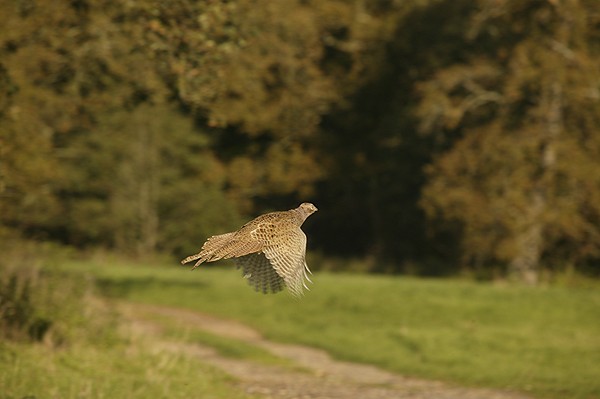On your shoot: catching-up

Young hen pheasants are best for roasting
The majority of hens in our laying flock are caught-up from our shoot, and because we want a stock of good, healthy birds, we make a start on the catching-up once we have got the Christmas shooting out of the way. Doing this during the early part of January makes it easier to catch the number we want and gives us more to choose from. With decent weather, we can get most of it done in a week.
Knowing your birds
We catch-up and use our own stock because we know how the birds performed on shoot days. And we will also be aware of any disease challenges or problems they may have had since their release.
Buying in hens is a bit more of a lottery, unless you know the keeper and strain of bird really well. I prefer the security of using our own. Gamefarms tend to overwinter their birds instead of catching-up. They keep some of their hen poults back on the rearing field until they’re old enough to brail, then put them in decent-sized pens (which will last the birds the winter without becoming soiled), and transfer them to a laying pen in spring.
We don’t have the space for an overwintering pen and would probably be too busy with our poults to want to bother with a pen of hens as well.
Watching the weather
Once we’ve decided we’re going to catch, we put the pen sections (see panel on p.27) out in a few of our main drives and tie them together to make three sides of the catching pen. We leave the fourth side open, so that we can pre-feed it and to allow the birds free access until we want to catch.
When there are enough birds feeding freely in and around the catcher, we’re ready to set, but before we do we always have a look at the weather forecast. If it’s due to rain, we wait until it has passed.
Catching in the rain isn’t a good idea. Wet birds lose their feathers very quickly and the last thing anyone wants is birds with feathers missing. If it’s cold, they tend to go in the catchers better than if it’s warm and sunny, but as it’s usually a case of doing the catching between shoot days and other jobs we set, as long as it’s not raining.
These catchers are large enough for about 50 or so birds without them becoming crowded. We have used smaller ones, but I’ve found it’s easier to get the numbers we want with a few large catchers rather than having lots of small ones. Small ones can work well and are easier to take to the areas where you want to catch than the bigger pen section-type catchers, but they do need checking more often. Birds caught in a little catcher, especially one made entirely out of wire netting, are more at risk of damaging themselves than those in a bigger pen where they’ve got a bit of space to move about.
To set the pens, we simply tie the section with the pop-hole in it, add some more food and close the door. This is done in the morning as we go round; we empty them about an hour later, empty them again at lunchtime, and then do them once more in the afternoon.
When we do the final trip, we take out the birds we want then open up a side of the pen to let the others out. We then leave the side of the pen open to stop anything that comes to feed after we’ve left being stuck inside the catcher overnight.
Picking the stock
When we’re emptying the catchers, we try to select a bunch of hens fairly uniform in size, that don’t have any obvious injuries or health problems, and birds which are a good average weight. Any that are undersized or overweight are discarded. The underweight ones won’t produce many decent eggs and the overweight ones are prone to prolapsing once they are in full lay.
The cocks should feel strong when handled, be in peak condition and feather perfect. We put the cocks and A finished catching pen, with soft netting on the roof hens in different crates, 20 at a time, because it makes it easier to keep track of numbers when we’re transferring them to the laying units.
We top up or replace the straw in the crates daily. And with clean straw in the crates, we can stack several on top of each other when the birds are being transported from the catchers to the laying pen, without having to worry about any muck from the top crates making the ones underneath dirty. It makes for quite a busy week or so, but with two of us and a bit of a system going, we soon get through it, and once they’re caught and in the pen, we don’t have to worry about over-shooting hens on the rest of our days in January.
If you don’t have a laying pen but have a few hens in an out of the way corner (which isn’t going to get shot again this season), catch them up and trade or sell them to the gamefarm that supplied your chicks/poults. This is a good way of knocking a bit off next year’s bill, without affecting this year’s shooting.








